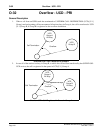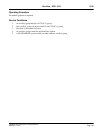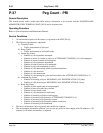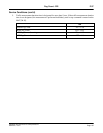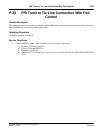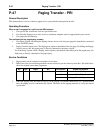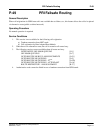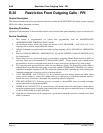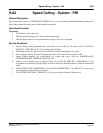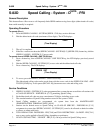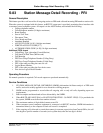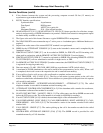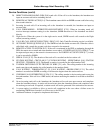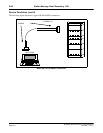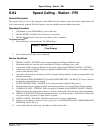
NEAX2400 IPX ISDN Features and Specifications
Page 112
NDA-24311, Issue 1
R-35 Restriction From Outgoing Calls - PRI
R-35 Restriction From Outgoing Calls - PRI
General Description
This feature automatically denies preselected station lines within the NEAX2400 IPX the ability to place outgoing
ISDN calls without Attendant assistance.
Operating Procedure
Operation is fully automatic so that restricted stations receive reorder tone upon attempting to place a restricted call.
Service Conditions
1. This feature is programmable via system data programming from the MAINTENANCE
ADMINISTRATION TERMINAL (MAT) [M-18].
2. Non-restricted stations within the system can activate CALL TRANSFER - ALL CALLS [C-11] to
outgoing calls to stations restricted by this feature.
3. Only the Attendant can permit restricted stations to place outgoing calls by NON-DELAY OPERATION
[N-3].
4. Refer to CLASS OF SERVICE - INDIVIDUAL [C-15] and DAY/NIGHT CLASS OF SERVICE [D-15]
for further details.
5. Station line access to a given trunk group is controlled by assigning a Route Restriction Class (RSC) to
each line. There can be a maximum of 15 different RSCs (RSC1 - 15) per system, each of which can be
programmed to restrict an assigned station from 0 or more trunk group (maximum 255 trunk groups).
6. Two outgoing trunk group restriction tables are provided per system. The Direct Dial Access table is
indexed when a user dials the trunk group access code, and the ATTENDANT CONSOLE [A-3] table is
indexed on Attendant completed calls. The restriction options per RSC can differ per table, allowing the
Attendant completion of outgoing calls for restricted stations.
7. CALL TRANSFER - ALL CALLS [C-11]: If a restricted user calls another station, the called station
cannot use this feature to connect the calling station to a trunk group to which the restricted station is
denied dial access. If transfer is attempted, the controlling station is rung back.
8. TIE LINE ACCESS [T-3]: If the user accesses a tie trunk to a distant PBX, access to outside exchanges
can be controlled only by the distant PBX.
9. THREE-WAY CALLING [T-2]: If a restricted user calls another station, the called station cannot add-on
an outside exchange party via a trunk group in which the restricted station is denied dial access. An attempt
to add-on (SHF) results in a split connection.
10. Night Service: Restrictions can be changed for a given station when the system is switched to the Night
mode of operation.



